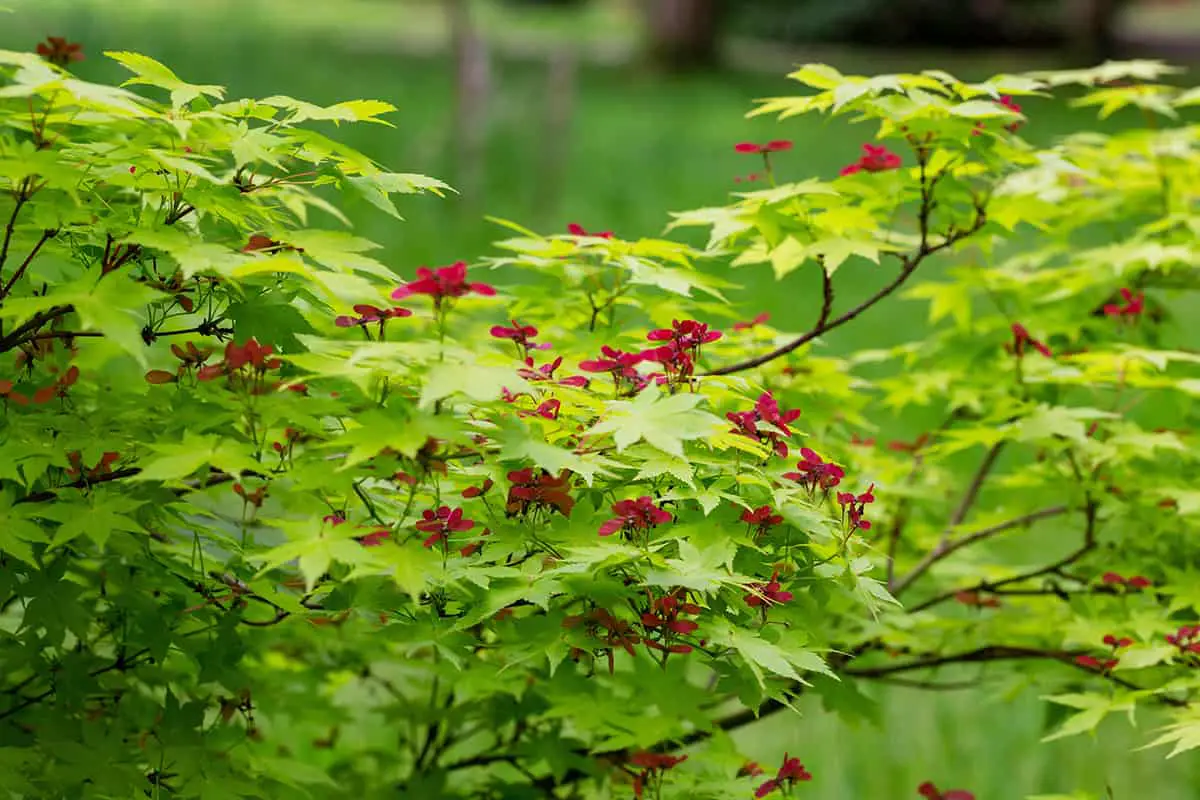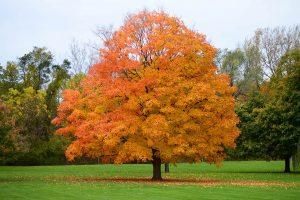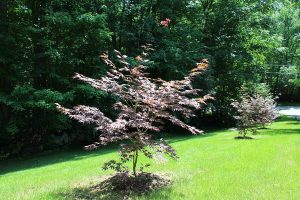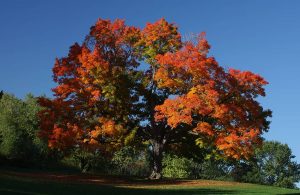Maple trees are deciduous trees belonging to the Acer genus in the Sapindaceae family. They can vary from small to large trees and are native to Asia, Africa, North America, and Europe. These trees are loved for their heavily lobed leaves and striking fall colors when the foliage warms up to shades of yellow, orange, and red.
Although maple trees are not known for their flowers, they do bloom annually during spring. The month during which your maple tree will bloom depends on the species of the tree, as well as your local climate.
Here we look at the expected blooming time of some of the most popular types of maple trees.
Red Maple
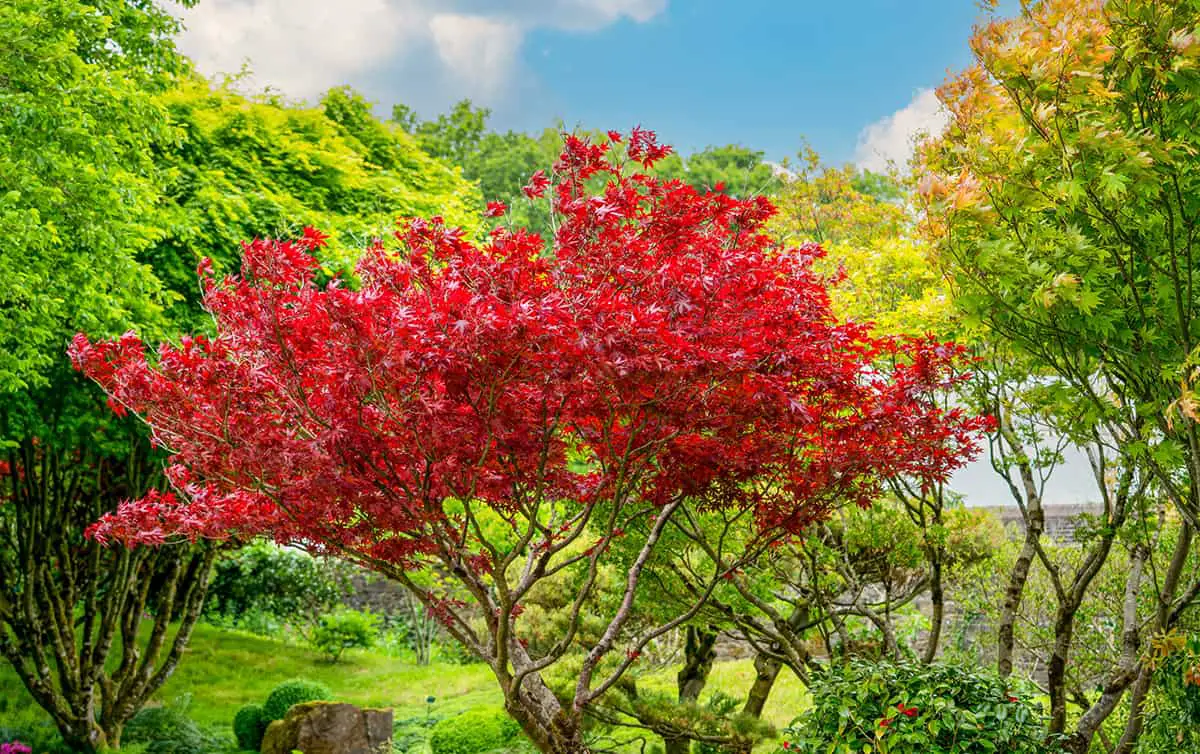
- Botanical name: Acer rubrum
- Common names: Red Maple, Swamp Maple, Canadian Maple, Scarlet Maple
- Plant family: Sapindaceae
- USDA hardiness zone: 3 – 9
- Mature height: 70 to 120 feet
- Mature spread: 30 to 80 feet
The Red Maple is so-called because of its bright scarlet foliage, which stands out against the dull landscape of fall before dropping to the ground to reveal the bare structure of the tree. Although this tree is mostly known for its intense red leaf color, it also produces red flowers, red fruits, and red twigs.
The flowers are so small that they aren’t considered to be particularly showy, but they do arrive on the bare branches of the tree in late winter or early spring before the leaves have emerged, and therefore they add some much-needed color to their surroundings. The flowers are held in clusters that point outwards in all directions, creating the effect of an exploding red firework.
The flowers of the Red Maple tree are some of the first to arrive amongst any of the maple varieties. They will start to bud and develop into blooms anytime from December through to May, depending on the climate conditions of the environment they are growing in.
Typically most Red Maples will not produce flowers until they are around eight years old, but in some instances, Red Maples as young as four years old have been known to bloom.
Japanese Maple
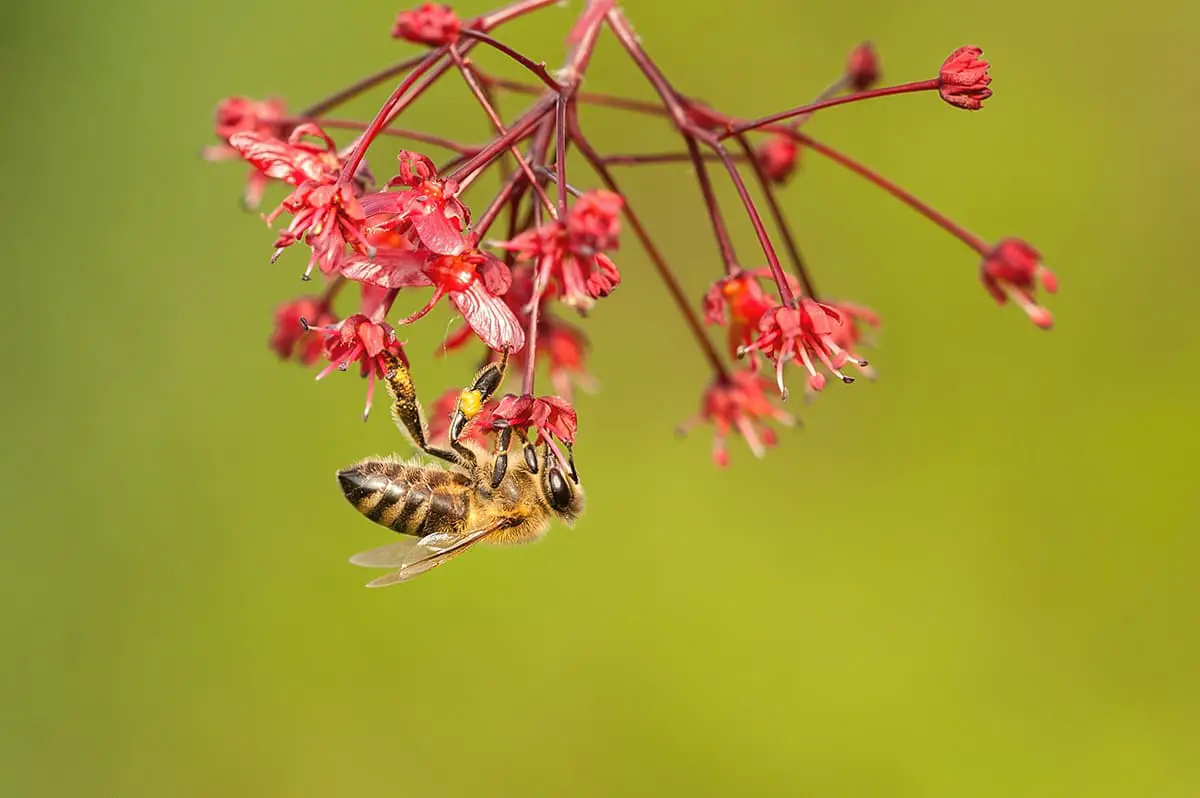
- Botanical name: Acer palmatum
- Common names: Japanese Maple, Smooth Japanese Maple, Palmate Maple
- Plant family: Sapindaceae
- USDA hardiness zone: 5 – 9
- Mature height: 4 feet to 30 feet
- Mature spread: 3 feet to 25 feet
Japanese Maples are particularly decorative plants that are commonly cultivated in home gardens for their striking and unusual foliage.
There are over 1000 cultivars of the Japanese Maple, and each of these will have slightly different flowers. They are typically quite small and discreet, blooming towards the end of spring and into the beginning of summer, usually in May or June.
Florida Maple

- Botanical name: Acer floridanum
- Common names: Florida Maple, Hammock Maple, Southern Sugar Maple, Rock Maple, Caddo Maple
- Plant family: Sapindaceae
- USDA hardiness zone: 6 – 9
- Mature height: Up to 60 feet
- Mature spread: Up to 50 feet
The Florida Maple is easily mistaken for the Sugar Maple because the two looks so similar, and in fact, the Florida Maple is often known as the Southern Sugar Maple for this reason. The best way to distinguish the two species is by comparing the leaves since the foliage of the Sugar Maple is smaller.
The Florida Maple will flower around two weeks earlier than the Sugar Maple, so this is another way you can detect a difference between the two if one is in bloom before the other. The flowers of the Florida Maple are small and greenish-yellow in color.
They will usually arrive on the tree just before the emergence of the foliage, or at the same time as the foliage, in the middle of spring. The flowers are held in small clusters of just a few flowers, and these will dangle from the tree.
Bigleaf Maple
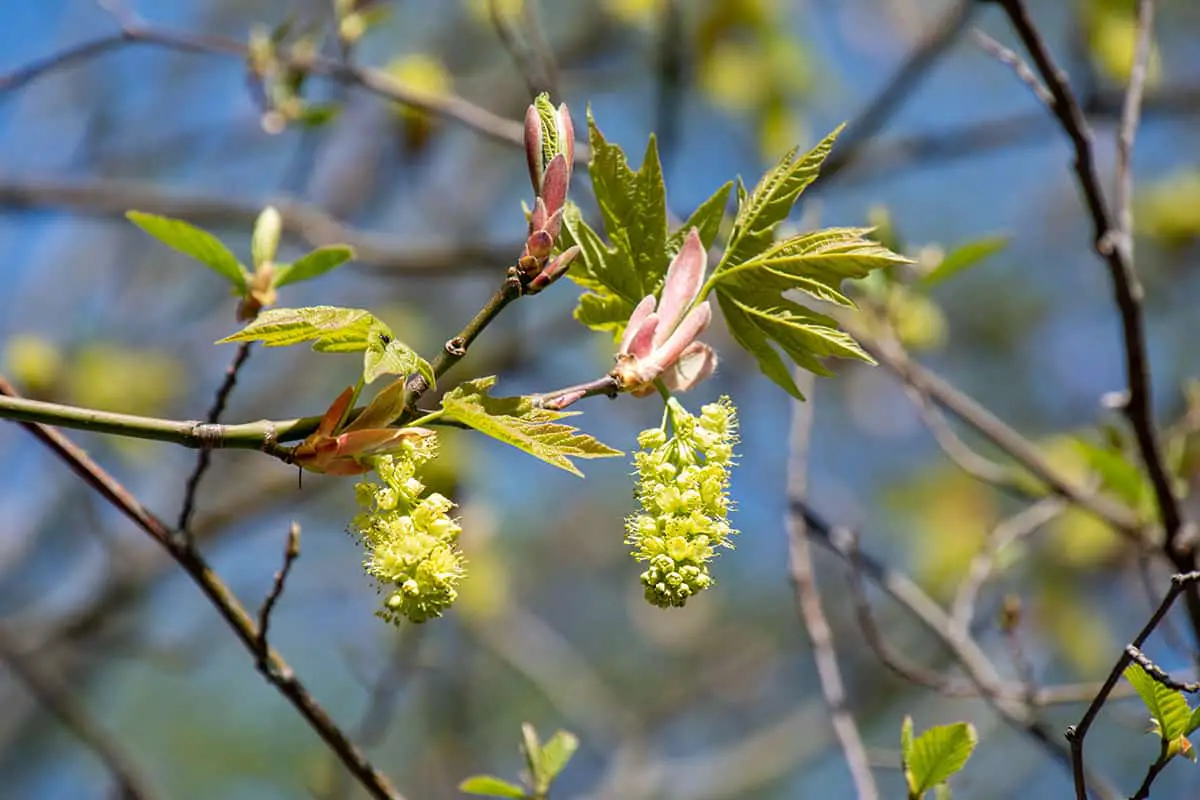
- Botanical name: Acer macrophyllum
- Common names: Bigleaf Maple, Oregon Maple,
- Plant family: Sapindaceae
- USDA hardiness zone: 3 – 8
- Mature height: 50 to 70 feet
- Mature spread: 50 to 70 feet
The Bigleaf Maple tree is named after its large leaves, which are bigger than those on any other type of maple. However, this tree is also the producer of the showiest flowers of any maple tree, which hang in dense, pendulous clusters measuring between 4 and 8 inches in length.
The flowers arrive in mid to late spring, and they have a creamy yellowish-green color. Each cluster of blooms can feature as many as 175 small blossoms, creating a dramatic floral display.
Norway Maple
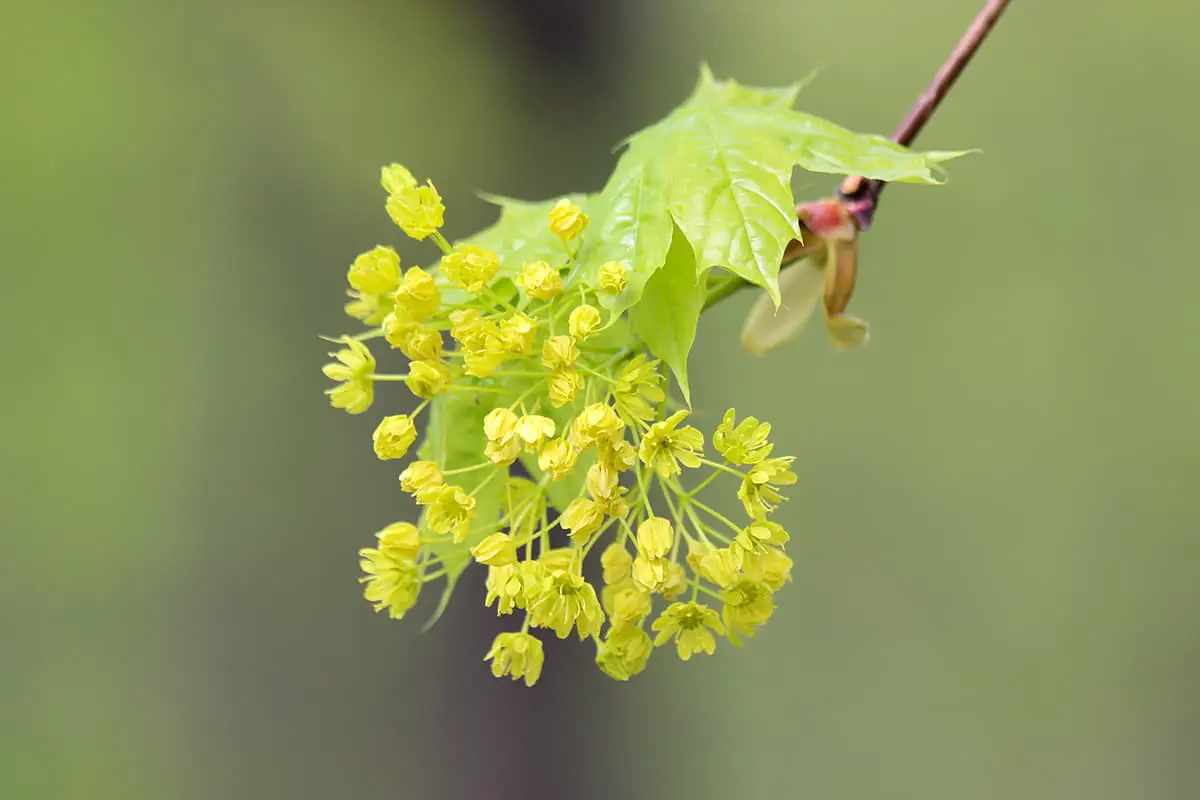
- Botanical name: Acer platanoides
- Common names: Norway Maple, Plane-leaved Maple
- Plant family: Sapindaceae
- USDA hardiness zone: 3 – 7
- Mature height: 50 to 80 feet
- Mature spread: 40 to 60 feet
The Norway Maple blooms in the early spring of each year with brightly colored yellow or lime green flowers which have a strong scent. The flowers are held in clusters of around 30 blossoms, which gives them a more showy look and a greater impact.
They will arrive on the bare branches of the tree before the leaves have had a chance to arrive and so they can stand out quite well against the brown-gray bark of the Norway Maple.
Sugar Maple
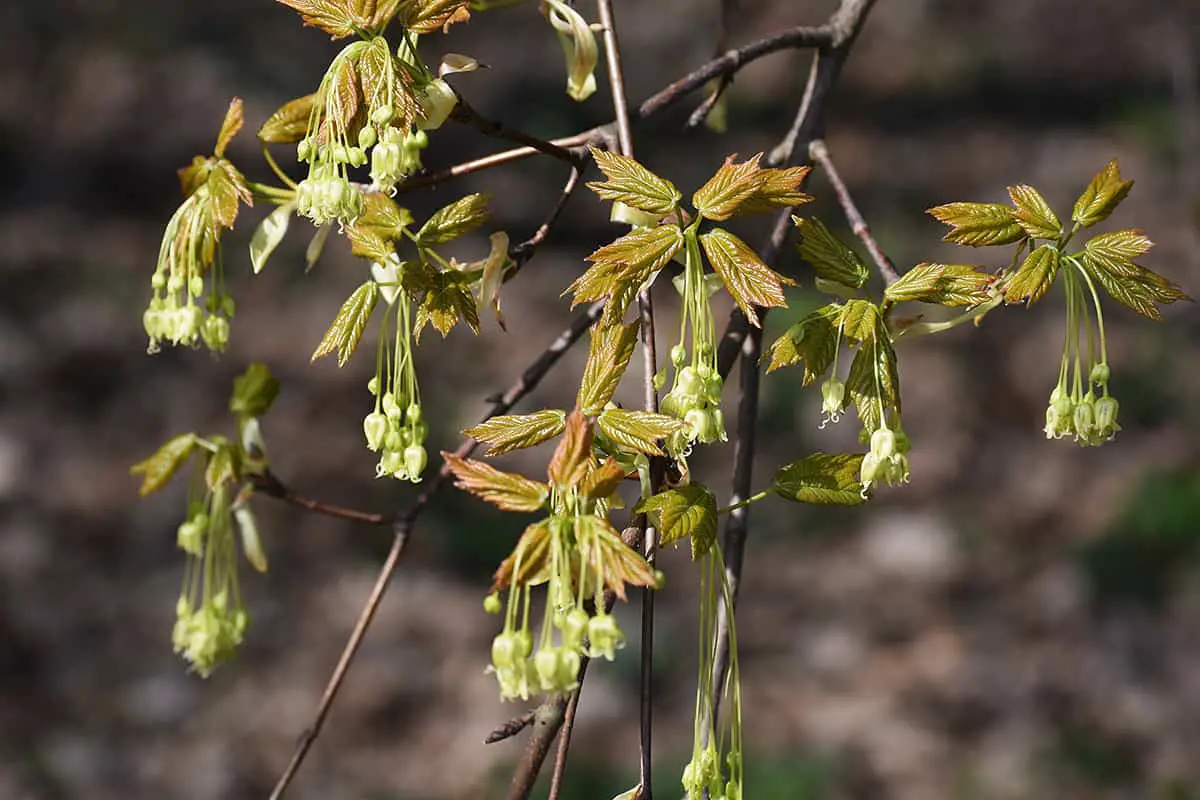
- Botanical name: Acer saccharum
- Common names: Sugar Maple, Northern Sugar Maple, Striped Maple, Rock Maple, Hard Maple, Sweet Maple
- Plant family: Sapindaceae
- USDA hardiness zone: 3 – 9
- Mature height: 60 to 100 feet
- Mature spread: 50 to 80 feet
The Sugar Maple is adored for its bright fall foliage, and it is also well known for being the species from which maple syrup is derived. This tree also produces pretty sprays of flowers held in upright clusters. The flowers are green-yellow, and they typically bloom in early spring before the arrival of the leaves, though this is dependent on how mild the preceding weeks have been.
If you have a mature Sugar Maple which is not flowering, then this isn’t uncommon. Though some Sugar Maples will start to produce flowers after the age of 10 years, some will not begin to flower until they are 200 years old!
Amur Maple
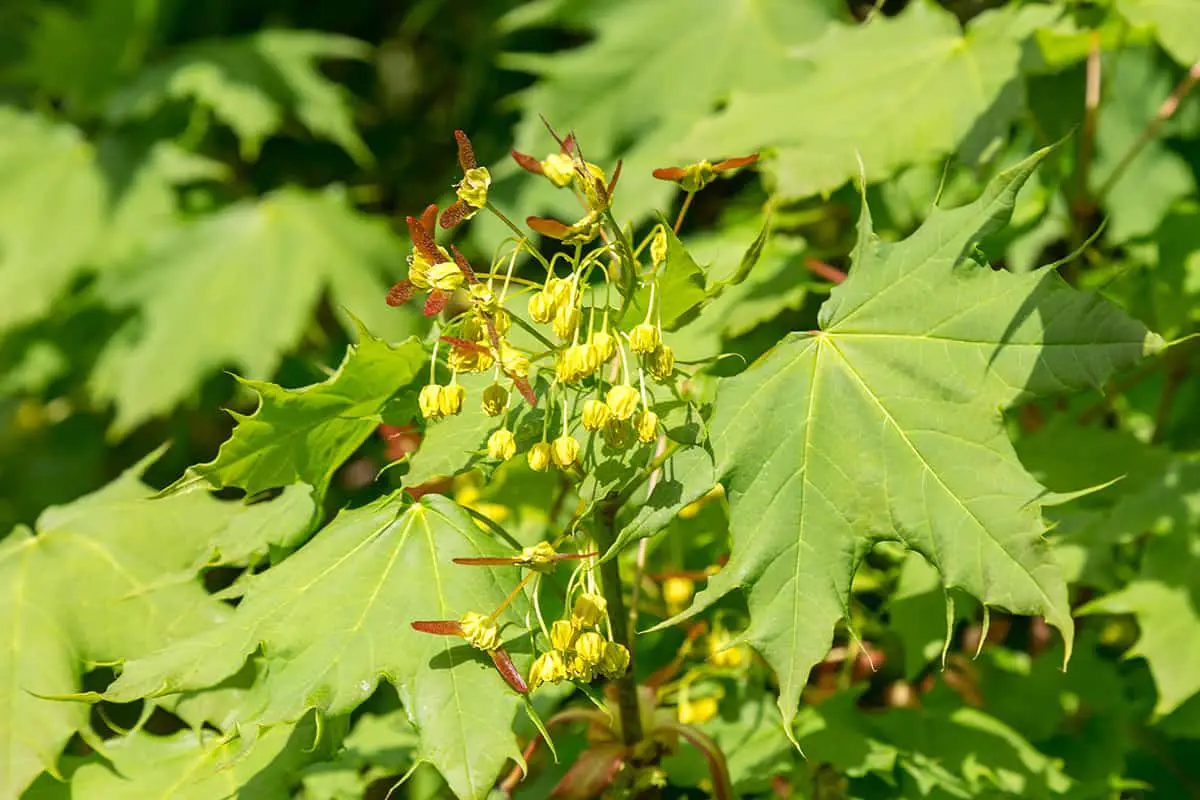
- Botanical name: Acer ginnala
- Common names: Amur Maple
- Plant family: Sapindaceae
- USDA hardiness zone: 3 – 7
- Mature height: 15 to 20 feet
- Mature spread: 15 to 20 feet
Unlike many species of maple, the Amur Maple is actually prized for its flowers and the following winged samaras it produces. The plant can be grown as a large shrub or small tree, and it sends out tiny cream-colored flowers in spring, which open out just as the leaves are also emerging.
The flowers hang in dense clusters along the lengths of the branches and emit a strong and sweet fragrance. By late summer to early fall, the samaras will have developed, and these take on a bright fuchsia or pink-red color, which stands out against the backdrop of dark green leaves.
The colorful samaras can remain on the tree right up to the end of fall, decorating the branches like brightly colored ornaments. The foliage of the tree warms up in the fall, usually to a bright shade of red but occasionally to a glowing, buttery yellow, creating a blaze of color in the autumn landscape.
